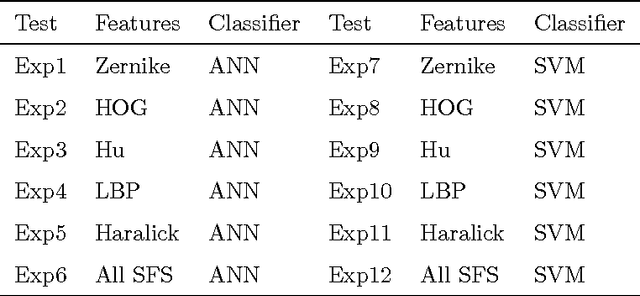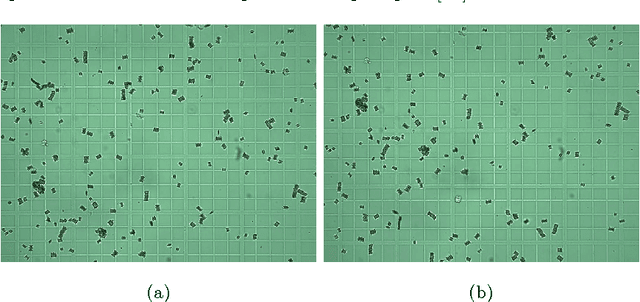Jesus Francisco Vargas Bonilla
Automatic Identification of Scenedesmus Polymorphic Microalgae from Microscopic Images
Oct 23, 2017



Abstract:Microalgae counting is used to measure biomass quantity. Usually, it is performed in a manual way using a Neubauer chamber and expert criterion, with the risk of a high error rate. This paper addresses the methodology for automatic identification of Scenedesmus microalgae (used in the methane production and food industry) and applies it to images captured by a digital microscope. The use of contrast adaptive histogram equalization for pre-processing, and active contours for segmentation are presented. The calculation of statistical features (Histogram of Oriented Gradients, Hu and Zernike moments) with texture features (Haralick and Local Binary Patterns descriptors) are proposed for algae characterization. Scenedesmus algae can build coenobia consisting of 1, 2, 4 and 8 cells. The amount of algae of each coenobium helps to determine the amount of lipids, proteins, and other substances in a given sample of a algae crop. The knowledge of the quantity of those elements improves the quality of bioprocess applications. Classification of coenobia achieves accuracies of 98.63% and 97.32% with Support Vector Machine (SVM) and Artificial Neural Network (ANN), respectively. According to the results it is possible to consider the proposed methodology as an alternative to the traditional technique for algae counting. The database used in this paper is publicly available for download.
 Add to Chrome
Add to Chrome Add to Firefox
Add to Firefox Add to Edge
Add to Edge